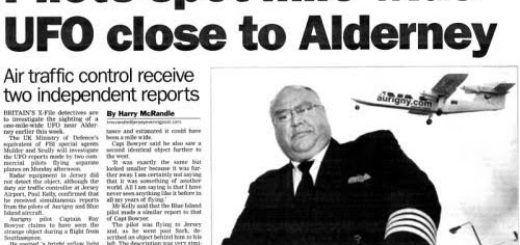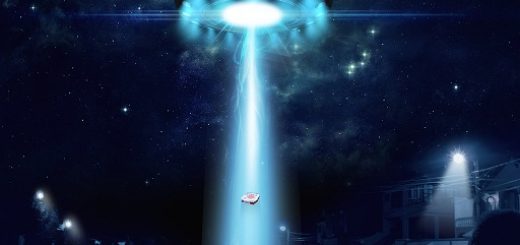E.T. signal from Proxima Centauri? A conversation with Breakthrough Initiatives’ Pete Worden

The signal was probably just interference. But the search for technosignatures continues.
News travels fast — at the lickety-split speed of light, potentially. Back in December, great attention was paid to a report that a mysterious radio signal appeared to have come from the vicinity of Proxima Centauri, the closest star to Earth.
Proxima Centauri, which is just 4.2 light-years from us, is known to host two planets. One of those two worlds, Proxima b, is slightly more massive than Earth and might be capable of supporting life as we know it.
The Breakthrough Listen project, part of the Breakthrough Initiatives group, made the recent detection using the Parkes radio telescope in Australia, dubbing the signal BLC1 for “Breakthrough Listen Candidate 1.”
Breakthrough Initiatives is backed by Yuri Milner, a science and technology investor and philanthropist who founded the organization. Its Breakthrough Listen activity is a $100 million program of astronomical observations and analysis, the most comprehensive ever undertaken in the search for evidence of technological civilizations in the universe.
Space.com recently talked with Breakthrough Initiatives executive director Simon Peter “Pete” Worden about BLC1 and the search for alien “technosignatures” more generally; the protocols for announcing an ET detection; and the latest about the prospects for life on Venus, another study effort being undertaken by Breakthrough Initiatives.
Spoiler alert: Don’t be heartbroken in learning how tough “radio-waving” between civilizations truly is!
Space.com: What’s the latest on the purported Proxima Centauri signal?
Worden: We’re about to submit our papers on the signal. We’re virtually certain now that it’s interference. I can’t get into the details. However, our intent was that this was kind of a pathfinder, so we’re happy with the opportunity. It’s the first signal that passed our basic test.ts?
Worden: The key thing for us is that we have gone through the “what if” — what if it’s this, what if it’s that? What are the sources of interference? So we’re just about completed with that. An internal review team is looking at our papers, one on the approach we’ve taken, and the other is on the actual data collected. Then we’ll submit them to a journal. But we’re virtually certain that it was interference.
Worden: Yes, but it’s a technical thing too. Ultimately, this underscores that we need to have several different instruments. We’re just in the process of bringing online the South African MeerKAT radio telescope, the first phase of the Square Kilometer Array (SKA) set of radio dishes. In fact, we’re probably going to do some coordinated observations, both with MeerKAT and the Parkes radio telescope in the next couple of months. In general, we’re learning what it is that we expect to see in terms of a technosignature.
Related: SETI and the search for extraterrestrial life
Space.com: The Parkes telescope in Australia, used to pick up the signal, reportedly has had trouble in the past with interference. Why so?
Worden: That’s true of any radio telescope. A big issue a decade ago — when fast radio bursts [FRBs] were detected, there were two kinds of FRBs. One of them we now understand as a fast radio burst … the other one turned out to be due to microwave interference. There’s all sorts of interference that you have to track down. The real answer is that when you see these things you need to very quickly bring a second instrument online.
Worden: The only protocol we have is the “Declaration of Principles Concerning Activities Following the Detection of Extraterrestrial Intelligence,” which was developed by the International Academy of Astronautics (IAA). So our next task is to set up something, probably very comparable to the Central Bureau for Astronomical Telegrams. That hasn’t been set up as yet. There are no government protocols for this. Then there’s a related issue that has to do with managing the messaging to extraterrestrial intelligence.
Space.com: What lessons learned can you glean from this Breakthrough Listen Candidate 1 incident?
Worden: This was the first red-alert process. It mostly worked OK. We were reasonably pleased. It leaked to the press. There were probably about 20 people on the team. So it’s hard to figure out why it wouldn’t leak.
Obviously, job one is to set up networks to validate that a signal is a technosignature or could be. We’re working through that. No matter how interesting an individual signal is, it’s still a random signal until it is validated by different instruments, different researchers. So the question is how to get other people quickly on the sky to look at these things. As we have more and more instruments and better and better detectors, we’re going to get a lot of things like this. So don’t get too excited when there’s an alert for a bunch of people to go take a look at things. As for a bottom line, we really want to make the technosignature area a legitimate scientific concern once again. It’s now on the way to being that.
Related: 10 exoplanets that could host alien life
Space.com: Lastly, Breakthrough Initiatives is also studying a look at the findings that the upper atmosphere of Venus may be a hot spot for life. What is the status of your study?
Worden: It is going pretty well. Sara Seager, an astrophysicist and planetary scientist at MIT, is leading that. We’re doing a design study as well as some lab work about what to look for at Venus. We’re getting back to Yuri Milner in the next month or two and see if he wants to go forward with some sort of mission. We’re looking at small, medium and large missions. We have been working with a number of people, including Rocket Lab and their interest in this area.
Worden: There’s something very interesting [at Venus]. I think the only way we’re going to figure it out is actually send a probe there. What do you look for? It turns out we can probably send a small probe fairly quickly and fairly cheaply, for tens of millions of dollars. The question is how definitive is the result that it gets. Then the question has to be followed up with a larger thing that gets into the atmosphere of Venus. Ultimately, you want to grab something, put it under a microscope, obtain a detailed chemical analysis and image it. So that’s where we are.



 Creators of mankind
Creators of mankind Description of “Tall white aliens”
Description of “Tall white aliens” Where they came from?
Where they came from? About hostile civilizations
About hostile civilizations The war for the Earth
The war for the Earth “Tall white aliens” about eternal life
“Tall white aliens” about eternal life Video: “Nordic aliens”
Video: “Nordic aliens” Aliens
Aliens Alien encounters
Alien encounters The aliens base
The aliens base UFO
UFO Technology UFO
Technology UFO Underground civilization
Underground civilization Ancient alien artifacts
Ancient alien artifacts Military and UFO
Military and UFO Mysteries and hypotheses
Mysteries and hypotheses Scientific facts
Scientific facts


















